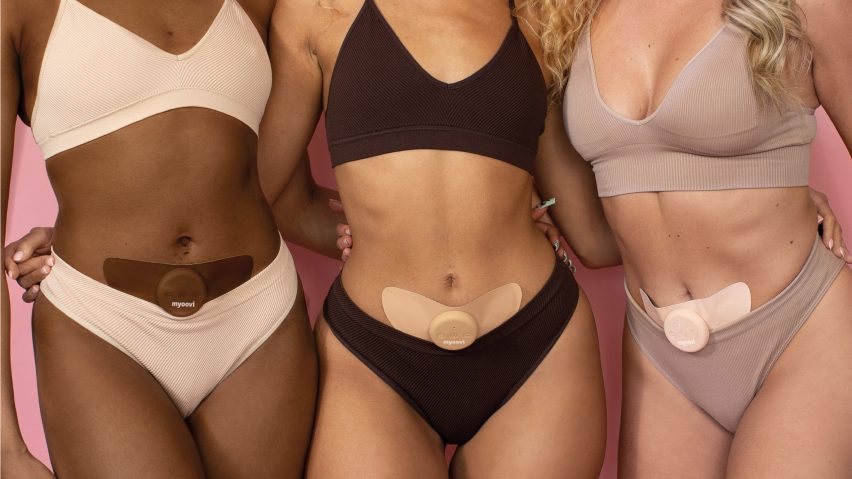
Myoovi is a wearable device designed to alleviate period pain
British doctor Adam Hamdi has developed a discreet wearable pad that can be secured to the skin to help relieve the wearer's menstruation cramps.
The wireless device, titled Myoovi, uses transcutaneous electrical nerve stimulation (TENS) technology to relieve pain on the go.
Myoovi founder Hamdi said he came up with the product idea while he was working in general practice for the UK's national health service (NHS), where he noticed that over-the-counter pain relief wasn't working for everyone who experiences period pain.
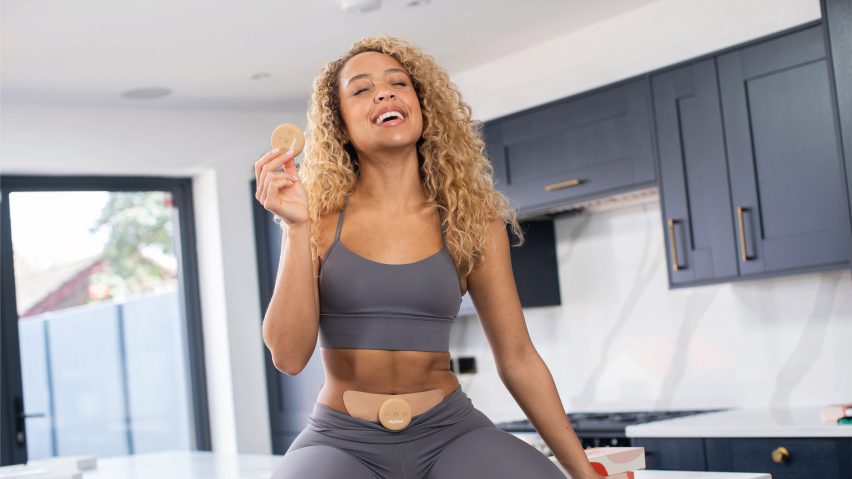
He believes that the portable device could offer an attractive alternative to the "bulky and wire-filled" TENS machines already on the market.
"I saw many patients with period pain and endometriosis for whom painkillers were not helping," Hamdi told Dezeen.
"I found that TENS technology was a well-researched and proven method to help; however, most patients did not know what it was or were reluctant to use it given its bulky and wire-filled nature," he continued.
"This gave me the idea to introduce a new product that is wireless, portable and discreet and create a brand that aims to raise awareness."
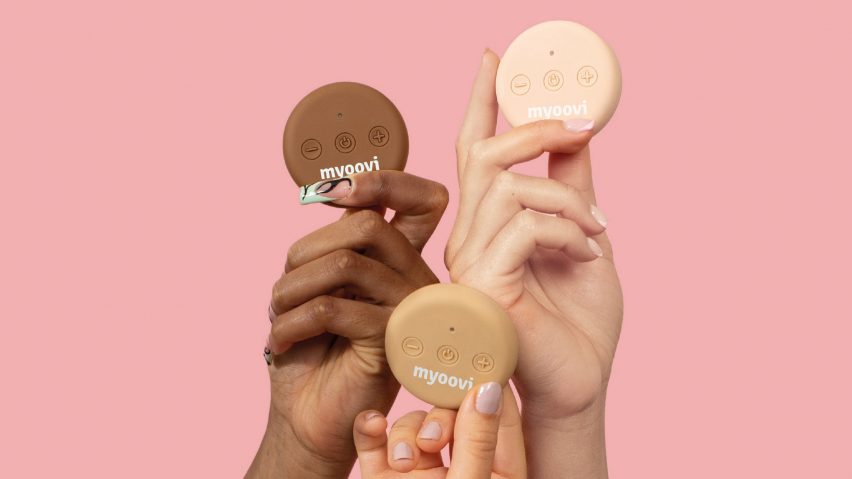
The disc-shaped Myoovi device incorporates a TENS machine, a USB-charged battery and three control buttons, which adjust the strength and pattern of the pulses.
TENS machines work by sending small electrical pulses from pads attached to the skin above the source of pain.
These pulses work by blocking or reducing the pain signals going to the spinal cord and brain, which can reduce pain for the wearer.
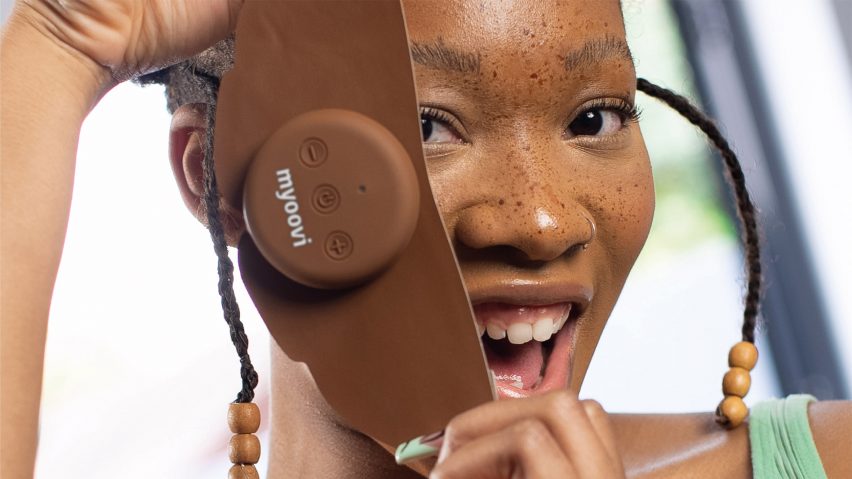
The Myoovi device lasts for up to ten hours on a single charge and comes in a kit that also includes two butterfly-shaped pads made from synthetic polyurethane (PU) leather.
The 7.5-centimetre-long pads, which are available in three different skin-tone shades, are attached like a plaster to the place of pain via biocompatible self-adhesive conductive hydrogel on the underside of the pad.
The gel pads underneath clothes usually last between 20-30 uses or up until they are no longer sticky, which Hamdi says usually translates to two months of wear.
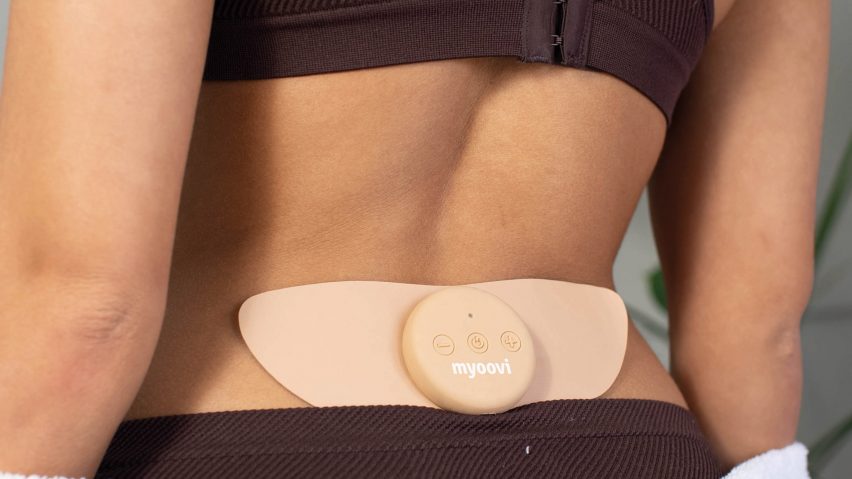
According to Hamdi, when turned on, Myoovi feels like a pulsing massage, with the electrical sensation causing a tingling sensation.
"The device is super light so you really don't notice it's there until you switch it on," said Hamdi. "Once you do, you will feel these tiny pulses in the area you have the device on," he added.
"These pulses work by distracting and blocking your pain receptors in the area and this stops them from being able to pick up any pain."
Myoovi was designed to reduce pain from conditions such as endometriosis, polycystic ovary syndrome or pelvic inflammatory disease, though NHS guidance states that there's not enough research to determine whether TENS is "a reliable method of pain relief".
It indicates that more high-quality scientific research is needed and medical trials are ongoing, adding that "healthcare professionals have reported that it seems to help some people".
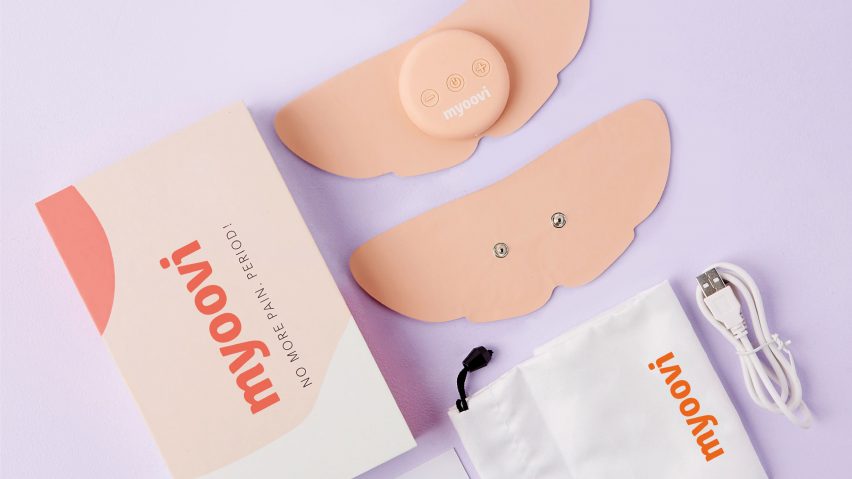
Other items designed to reduce pain associated with menstruation include a wristband for menopausal women called Grace, which is designed to regulate and alleviate hot flushes by Loughborough University graduate Peter Astbury.
Meanwhile, industrial designer Lauren Lee designed a heated wall called Warm Wall to offer people a communal place to alleviate their menstrual cramps.
The images are courtesy of Myoovi.